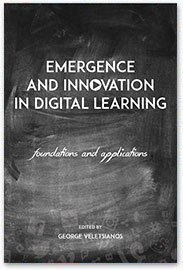Digital Learning and Social Media Research Funding
May 3 Update: A note on eligibility
- If you don’t fulfil the requirements for this call (e.g., you don’t hold a valid emlpoyment visa for Canada or are a later-career scholar), but are still interested in collaborating with us, we would still love to hear from you. Please head over to the form available on the opportunities & collaboration page of our website.
Description of Opportunity
The Canada Research Chair in Innovative Learning and Technology at Royal Roads University invites applications from advanced doctoral students (i.e. those who completed their graduate coursework) and post-doctoral associates to conduct research with the Digital Learning and Social Media Research Group.
Funding for five (5) research opportunities are available.
The Digital Learning and Social Media Research Group is an international and interdiciplinary team of researchers investigating the ways that social media and other emerging technologies are used in learning, teaching, scholarship, and institutional settings. The group is led by Dr. George Veletsianos (Canada Research Chair & Associate Professor, Royal Roads University) and Dr. Royce Kimmons (Assistant Professor, Brigham Young University). The Digital Learning and Social Media Research Group executes the CRC’s program of research.
Aims
The research funding opportunities aim to involve applicants in the scholarly endeavors of the research group and thus provide experiential mentoring focused on supporting the students’ or post docs’ scholarly and professional development. With a mentor, each student or post doc will co-plan, execute, and submit for publication a research study. The outcome of each research opportunity will be the publication of one (1) peer-reviewed paper.
Funding is available for research that focuses on one or more of the following areas: networked scholarship, social media use in education, digital/online learning, open learning, emerging technologies, learning analytics, social network analysis, or educational data mining.
Deadlines
Potential researchers should submit their application materials by May 16, 2016.
Start date is around June 6th
Deliverables
Submission of a co-authored research study to a peer-reviewed journal.
Duration
Research opportunities are expected to last anywhere from 3 to 5 months
Requirements
- Advanced doctoral student status (usually in the 3rd or 4th year of their studies) OR post doctoral status having completed a graduate degree (PhD/EdD) within the last 3 years.
- Enrolment in or having attained a graduate degree (PhD/EdD) in education, educational technology, learning technologies, learning sciences, curriculum and instruction, cognitive science, or other related field.
- Individuals must be Canadian citizens or permanent residents of Canada, or must hold a valid employment visa or work permit issued by the Government of Canada.
To be well-suited for this opportunity, individuals must have excellent organizational abilities, analytic skills, and be familiar with methodologies involving the analysis of quantitative or qualitative data.
Application Process
Interested applicants are invited to submit the following materials to Dr. George Veletsianos (george.veletsianos *at* royalroads.ca) by May 16, 2016:
- Curriculum Vitae (CV)
- A single-authored paper (class papers are acceptable)
- An expression of interest or research proposal (not to exceed 2 single-spaced pages) that includes the following:
- Description of a research project that the applicant wishes to complete under the auspices of the research group (This description should include at least 2-3 research questions of interest and a proposed methodology)
- Description of experiences analyzing quantitative or qualitative data
Applications will be evaluated by an academic panel.
Though the research group is interested in any proposal examining digital learning and social media use in higher education, we are especially interested in proposals focusing on analyzing large-scale datasets such as those gathered from public sources (e.g., Twitter, university websites, and others). The research group has expertise in this area and can collect, structure, and organize data necessary for such endeavors. Thus, we welcome applications from those with and without technical expertise. Past studies conducted in this context include the following:
| Research question |
Data sources |
| How do students and professors use Twitter? |
~600K tweets from ~400 Twitter profiles |
| What narratives do institutional Twitter acccounts construct for students and faculty? |
Images posted by public Canadian Universities on Twitter |
| How well do institutional websites meet mandated accessibility requirements? |
~3,000 U.S. university homepages |
For examples of research studies in this area conducted by the research group, please refer to:
Compensation
$2,000 CAD upon submission of the study to a journal to reimburse the student or post doc for their time working on

 Athabasca University Press has just published
Athabasca University Press has just published